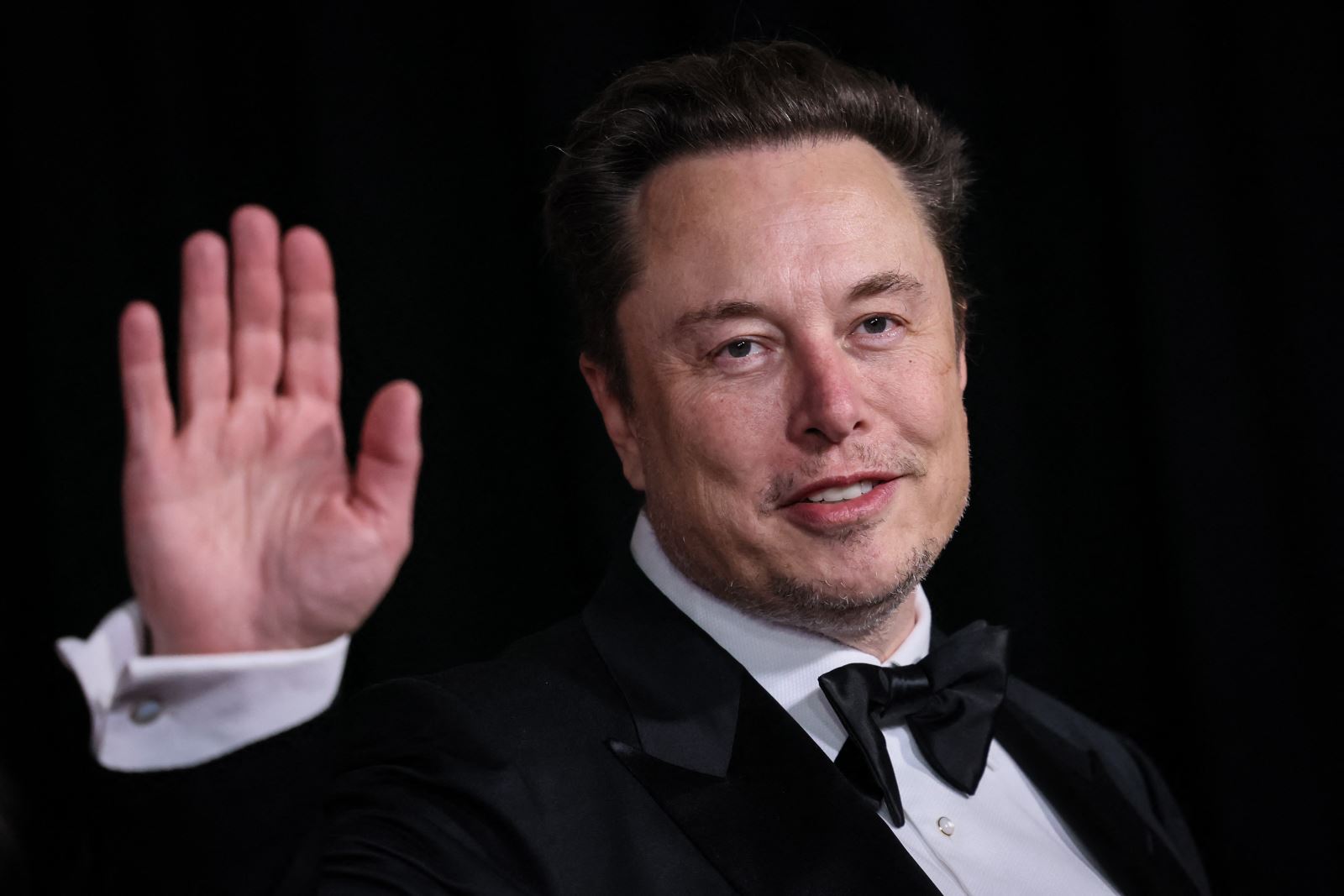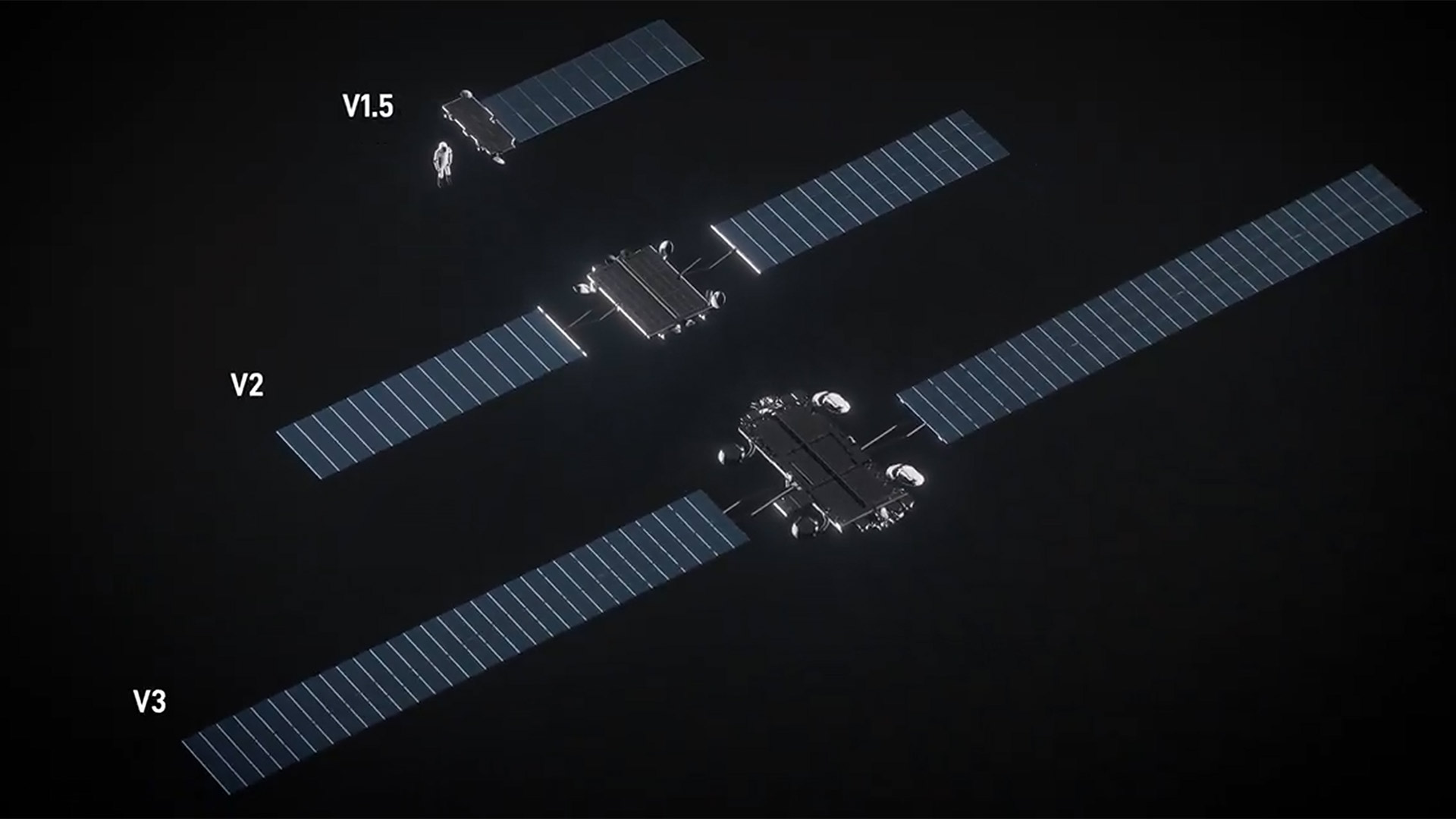This move is expected to open a new era for Starlink.

SpaceX has officially unveiled its next-generation Starlink V3 satellites, marking a major step forward in global broadband technology. Designed to deliver gigabit connectivity and add an impressive total downlink capacity of up to 60 terabits per second (Tbps) to the Starlink network, these new satellites promise to dramatically expand both speed and coverage for users around the world.
The information was revealed during the 11th Starship test flight livestream, where SpaceX showcased the size and power of the new V3 satellite and explained why the company switched from Falcon 9 to Starship as its booster.
The size change between Starlink generations is surprising. Each V3 satellite weighs up to 2,000kg, more than three times heavier than the current V2 Mini models (under 600kg) and nearly seven times heavier than the original V1 models (around 300kg). The new design takes advantage of Starship’s massive lifting capacity, allowing up to 60 V3 satellites to be deployed per launch.
According to SpaceX, the V3 satellites will “deliver gigabit connectivity to users and are designed to add 60 Tera-bits per second of downlink capacity to the Starlink network.”

Each V3 satellite is said to be capable of 1,000 Gbps download bandwidth and 200 Gbps upload, ten times faster than previous generations. These upgrades will help reduce congestion and improve reliability, especially in high-demand areas where user density has put pressure on existing networks.
SpaceX’s transition from the Falcon 9 to the Starship system is a necessary step in deploying the V3 fleet. Starship’s larger payload capacity not only allows for more satellites per flight, but also allows for the launch of much heavier, more powerful payloads. As PCMag noted, the company’s latest livestream showed how Starship will be essential in handling the scale of this next generation.
With Starship, each mission adds a huge amount of new network capacity, bringing Elon Musk’s original vision of a global high-speed broadband network closer to reality.
The new V3 satellites are expected to begin deploying as early as 2026, ushering in an era where Starlink can truly compete with terrestrial broadband networks. The satellites’ advanced architecture aims to address lingering issues like slow speeds in certain areas and coverage gaps that have frustrated some users.
However, SpaceX notes that new user hardware may be needed to take full advantage of the gigabit speeds and scalability that the V3 satellites bring.
While the new satellites offer more power and capabilities, they also pose new challenges, particularly in terms of sustainability. The extra mass of each V3 satellite means that more material must be burned up safely when re-entering the atmosphere at the end of its life. SpaceX insists that, like previous generations, the V3 models are designed to completely disintegrate upon re-entering the atmosphere, minimizing the risk of debris falling to Earth.
However, with thousands of satellites expected to enter orbit, space debris management remains a growing concern for space and regulatory agencies worldwide.
News
Inspired by David Beckham’s $1 billion win, Harry Styles decided to sue counterfeiters.
Harry Styles launches lawsuit inspired by David Beckham’s $1billion victory One Direction singer Harry Styles files case against counterfeiters One…
Charley Hull has opened up for the first time about her painful divorce from her ex-husband, MMA fighter John “Ozzie” Smith.
Charley Hull Opens Up on Traumatic Divorce from Ex-Husband for the First Time Ever At just 23, Charley Hull surprised many when…
Firerose recently shared a video exposing Billy Ray Cyrus’s ‘crimes’ in their relationship – and that video was anything but cute.
Country singer’s ex-wife alleges abuse in scathing video: ‘Control, isolation, rage, manipulation’ NASHVILLE, TENNESSEE – AUGUST 23: (L-R) FIREROSE and…
Billy Ray Cyrus demands thousands from woman claiming to be Miley Cyrus’ biological mom after she files bombshell lawsuit
The star had previously been on the receiving end of an unusual lawsuit relating to Miley Cyrus Billy Ray Cyrus…
“Not Walking Down the Aisle,” Riley Green and Ella Langley Join Country Music’s Elite Club.
Riley Green and Ella Langley Joins the Ranks of a Country Music Power Couple in the Record Books In June…
The Democratic Party released new photos of pedophile billionaire Epstein: Including President Trump and former President Clinton.
The Democratic Party releases new photos of pedophile billionaire Epstein. Democratic lawmakers have released new documents about pedophile billionaire Epstein,…
End of content
No more pages to load












